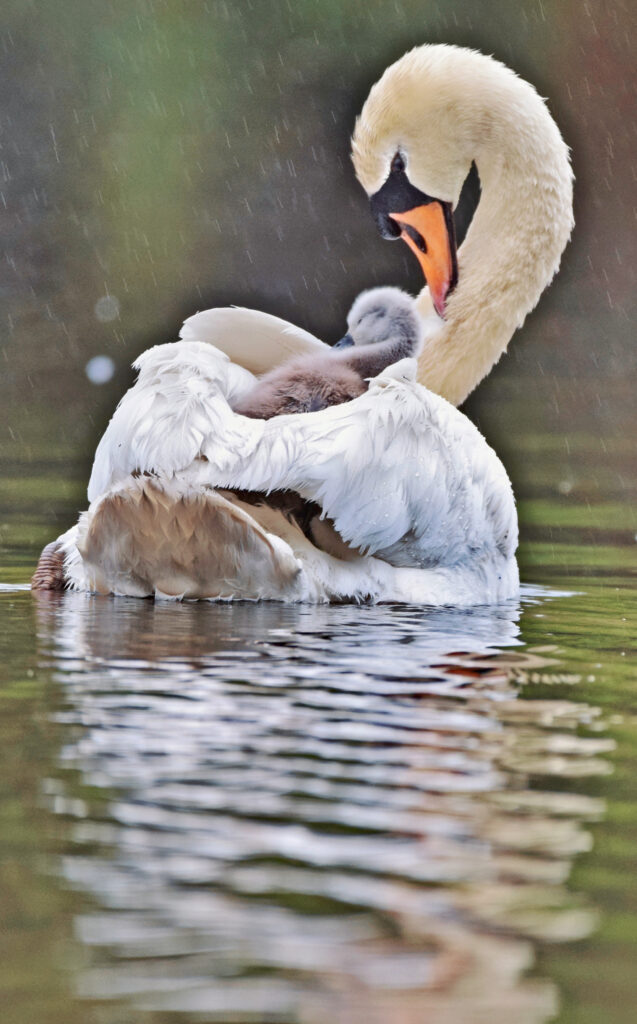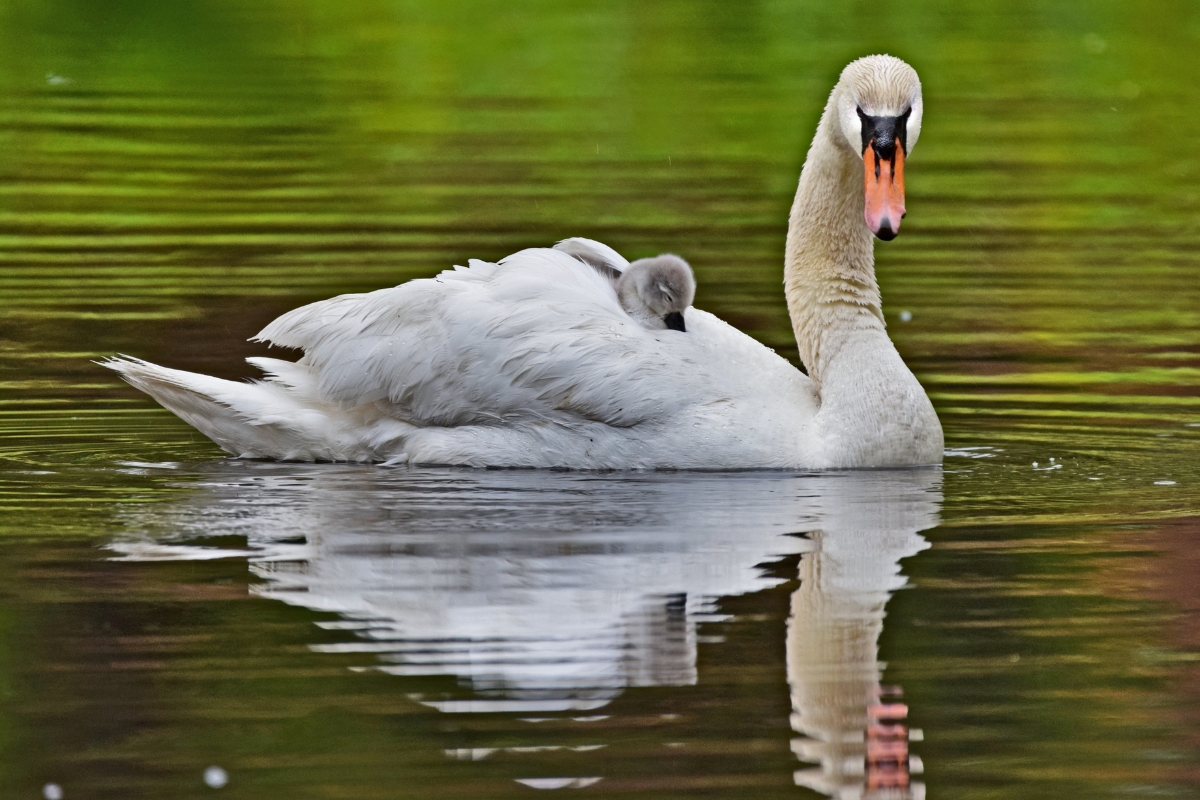By Nicole Rivard
Life. It’s all around us in the spring.
New seedlings are sprouting and dormant plants begin to grow again and. Tree buds protecting flowers inside are everywhere. Flowers emerge at various times, surprising us with different pops of color from day to day—nature’s own fireworks display.
But for me the best part is wildlife giving birth and being lucky enough to catch a glimpse of the babies from a safe distance that doesn’t make the animals feel threatened.
This year stands out because I saw my first pair of cygnets in the wild, swimming alongside the two swans who have been visiting the nature preserve near my apartment for the last few years. Unfazed by the rain on the last Sunday in April, I sat at the edge of the lagoon and photographed them using a zoom lens for at least an hour.
The highlight was seeing the babies climb onto their mom to hitch a ride; they snuggled up between her wings behind her neck. I read that cygnets will do this when it’s been raining heavily for a long time, since their down can get soaked through. By mom positioning her wings appropriately, the babies can be relatively well sheltered from the elements.
The baby swans will also climb aboard their parents’ backs if they are cold, need some shade from the sun or are tired. Once the cygnets get beyond 14 days old, these free rides come to an end.
But what doesn’t come to an end is how protective the parents will continue to be of their young. Around 50% of cygnets fail to survive longer than two to three months, and a further 25% are likely to die before adulthood. Most cygnets die through predation, disease and parasites.
Cygnets born earlier in the season are more likely to survive, the odds for latecomers being much lower, according to Mark Nicolaides, author of Swan Life. Experienced swan couples will usually try and lay their eggs earlier in the season. Swans will learn from their mistakes and look to make amends in the next breeding season if they make mistakes that cost the survival of their brood.
Cygnets are essentially helpless when they are young and are easily picked off by predators such as seagulls, herons, crows and snapping turtles.
Everything is a threat, and swan parents have the right to act like it is.

There are also Canada geese and their goslings in this nature preserve, and they too are protective of their young for all the same reasons.
That’s why it is irritating to read headlines like “Why are geese so aggressive and mean?” which first appeared online May 1 by Harrisburg, Pennsylvania’s local news outlet ABC27. It was shared across other ABC news outlets.
It is not fair to label mute swans and Canada geese as aggressive birds just because when they are nesting or defending young, they become protective parents. That should be admirable to humans.
Mute swans even deal with being labelled non-native invaders.
In the 1990s, a plan by the Connecticut DEEP to control the state’s mute swan population drew the ire of Friends of Animals and world-renowned ornithologist Roger Tory Peterson, who was a resident of Old Lyme at the time.
“I support the view of Friends of Animals that mute swans should be left alone and that their eggs should not be addled. The excuse has been that they are ‘alien’ and do not belong here,” he said. “Frankly, all of us are aliens except the original Indians. Mute swans are able to live with us on our own terms, which says a lot for them, and they give a great deal of pleasure to people.”
Peterson, who passed away in 1996, often recalled an experience at age 11 that sparked his lifelong love of birds, according to CThistory.og.
While walking with a friend in Jamestown, N.Y., Peterson spotted what he thought was a clump of feathers in a tree, near the ground. It was a Northern flicker, apparently tired from migration.
“I poked it with my finger; instantly, this inert thing jerked its head around, looked at me wildly, then took off in a flash of gold. It was like resurrection. What had seemed dead was very much alive,” Peterson said. “Ever since then, birds have seemed to me the most vivid expression of life.”
I couldn’t’ agree more.

